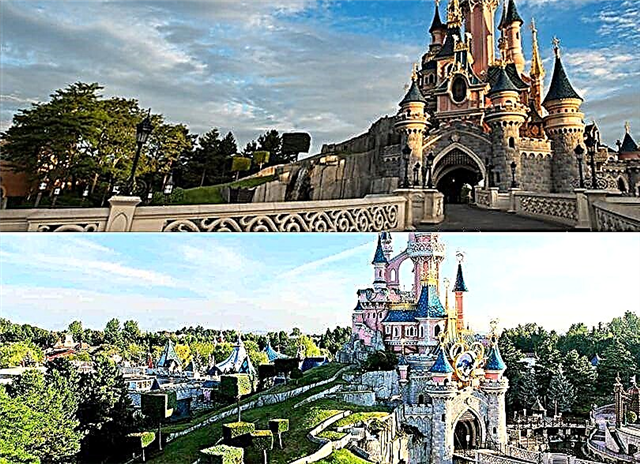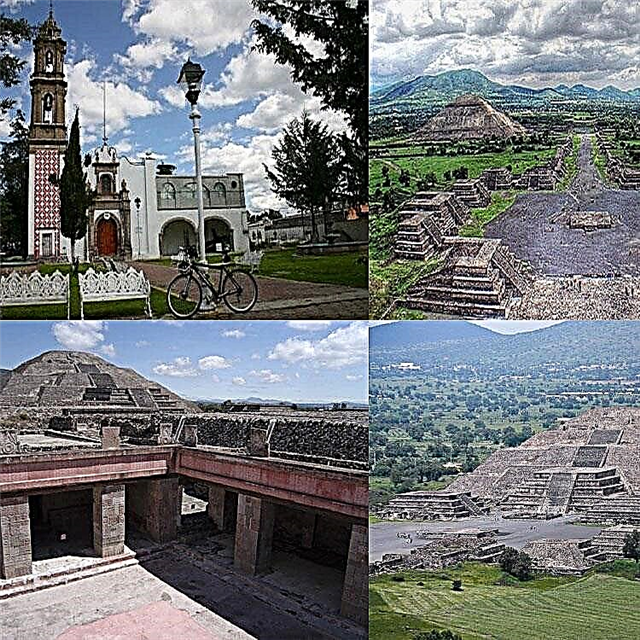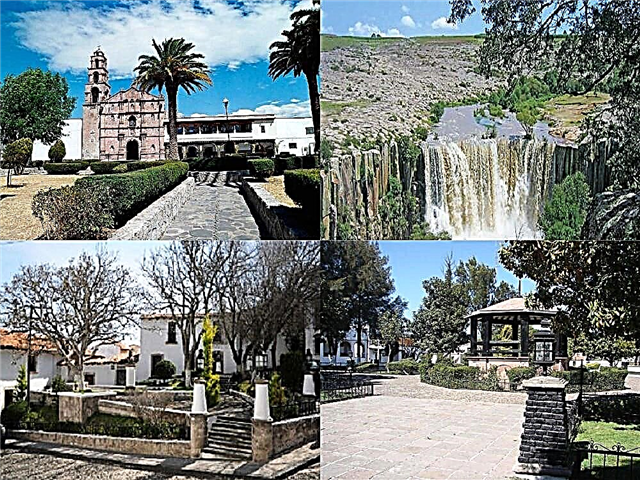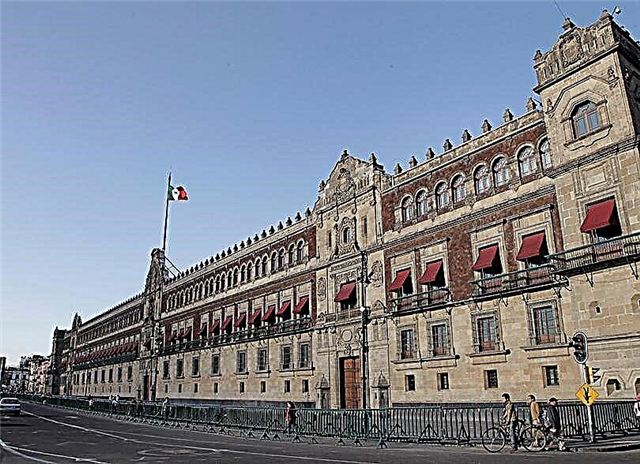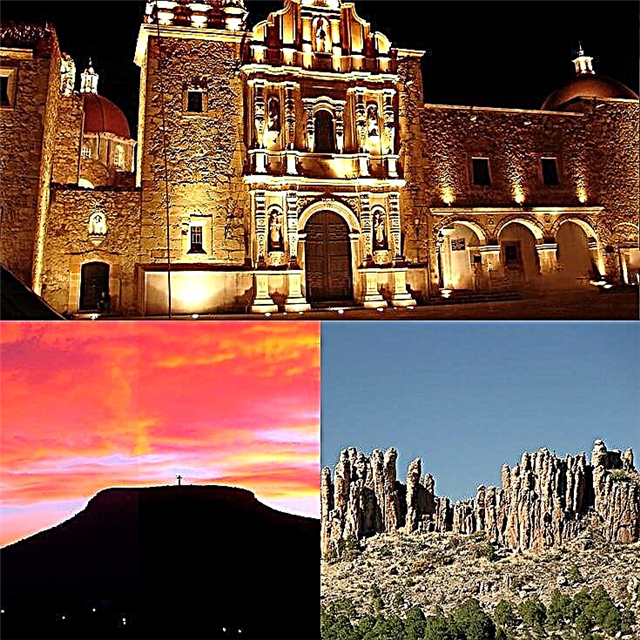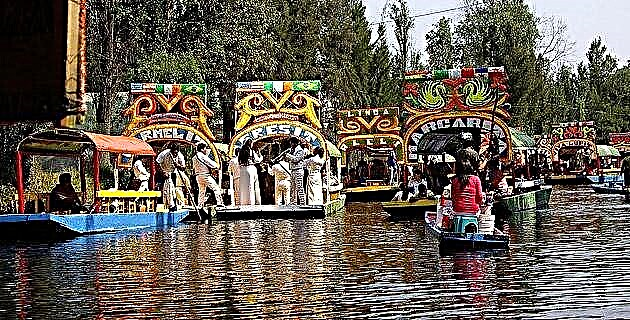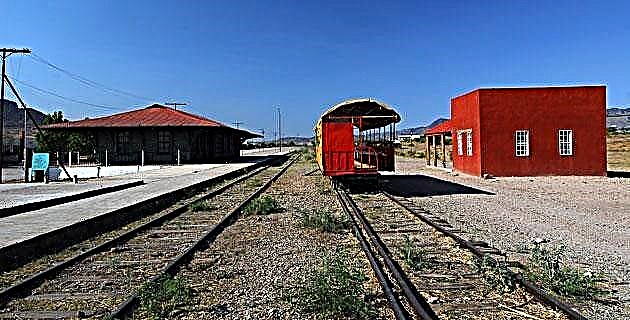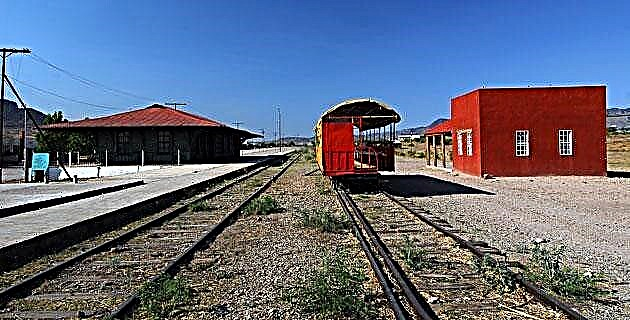
Currently the more than 24,000 km of national rail network touch most of the economically important regions of Mexico, linking the country to the north with the United States border, to the south with the border of Guatemala, and from east to west to the Gulf of Mexico with the Pacific. This has been the result of a long railway construction process, based on a great diversity of concessions and legal forms of ownership and with the laying of lines with varied technical characteristics.
The first railway line in Mexico was the Mexican Railroad, with English capital, from Mexico City to Veracruz, via Orizaba and with a branch from Apizaco to Puebla. It was inaugurated, in its entirety, by President Sebastián Lerdo de Tejada, in January 1873. At the end of 1876, the length of the railway lines reached 679.8 km.
During the first term of President Porfirio Díaz's government (1876-1880), railroad construction was promoted through concessions to state governments and Mexican individuals, in addition to those administered directly by the State. Under concession to the state governments, the Celaya-León, Omestuco-Tulancingo, Zacatecas-Guadalupe, Alvarado-Veracruz, Puebla-Izúcar de Matamoros and Mérida-Peto lines were built.
Under concession to Mexican individuals, the Hidalgo Railroad lines and the Yucatan lines stand out. By direct administration of the State, the Esperanza-Tehuacán National Railroad, the Puebla-San Sebastián Texmelucan National Railroad and the Tehuantepec National Railroad. Later, most of these lines would become part of the large foreign capital railroads, or would join the Ferrocarriles Nacionales de México at a later period.
In 1880, three important railroad concessions were granted to North American investors, with all kinds of facilities for the construction and import of rolling stock and equipment, which gave rise to the Central Railroad, the National Railroad, and the International Railroad. At the end of the first period of Díaz's government, in 1880, the railroad network under federal jurisdiction had 1,073.5 km of track.
Later, during the four years of Manuel González's government, 4,658 km were added to the network. The Central concluded its section to Nuevo Laredo in 1884 and the Nacional advanced in its sections from the north to the center and vice versa. In that year the network had 5,731 km of track.
The return of Porfirio Díaz and his permanence in power from 1884 to 1910 consolidated the railway expansion and the facilities for foreign investment. In 1890 9,544 km of track were built; 13,615 km in 1900; and 19,280 km in 1910. The main railways were the following: Central Railroad, of North American capital. Concession granted to the Bostonian company Achison, Topeka, Santa Fe. Line between Mexico City and Ciudad Juárez (Paso del Norte). Inaugurated in 1884 with a branch to the Pacific through Guadalajara and another to the port of Tampico through San Luis Potosí. The first branch was inaugurated in 1888 and the second in 1890. Sonora Railroad, of North American capital. In operation since 1881, concessioned to the Achison, Topeka, Santa Fe. Line from Hermosillo to Nogales, border with Arizona. National Railroad, of North American capital, from Mexico City to Nuevo Laredo. Its trunk line was inaugurated in 1888. Later with the purchase of the Southern Michoacan Railroad, it was extended to Apatzingán and was linked to Matamoros to the north. It was completed in its entirety in 1898. International Railroad, of North American capital. Line from Piedras Negras to Durango, where it arrived in 1892.
In 1902, it had a branch to Tepehuanes. Interoceanic Railway, of English capital. Line from Mexico City to Veracruz, via Jalapa. With branch to Izúcar de Matamoros and Puente de Ixtla. Ferrocarril Mexicano del Sur, concessioned to nationals, was finally built with English capital. Line that goes from the city of Puebla to Oaxaca, passing through Tehuacán. It was inaugurated in 1892. In 1899 it bought the branch from Tehuacán to Esperanza from the Mexican Railroad. Western Railway, of English capital. Line from the Port of Altata to Culiacán in the state of Sinaloa. Railroad Kansas City, Mexico and Oriente, of North American capital. Rights purchased from Alberto K. Owen in 1899. Line from Topolobampo to Kansas City that only managed to consolidate the route from Ojinaga to Topolobampo, with the construction by S.C.O.P. of the Chihuahua-Pacific Railroad from 1940 to 1961.
Ferrocarril Nacional de Tehuantepec from the port of Salina Cruz on the Pacific Ocean to Puerto México (Coatzacoalcos) on the Gulf of Mexico. Initially owned by the state capital, in 1894 the English firm Stanhope, Hamposon and Crothell took responsibility for its construction, with poor results. In 1889 Pearson and Son Ltd. was in charge of its reconstruction. This same company was associated in 1902 with the Mexican government for the operation of the railroad. In 1917 the contract with Pearson was terminated and the government took over the line, annexed to the National Railways of Mexico in 1924. Mexican Pacific Railroad, with North American capital. Line from Guadalajara to Manzanillo passing through Colima. It was completed in 1909. Southern Pacific Railroad, of the North American group Southern Pacific. Product of the multi-line unit. It leaves from Empalme, Sonora, and reaches Mazatlán in 1909. Finally the line reaches Guadalajara in 1927.
Ferrocarriles Unidos de Yucatán, financed by local businessmen. They were integrated in 1902 with the various existing railways on the peninsula. They remained isolated from the rest of the railway lines until 1958, with the widening of the Mérida branch to Campeche and its connection with the Southeast Railroad. Pan-American Railroad, initially owned by the US capital and the Mexican government in equal parts. It united the border with Guatemala, in Tapachula and San Jerónimo, with the Nacional de Tehuantepec passing through Tonalá. Construction was completed in 1908. Mexico's Northwest Railroad, in operation in 1910. From Ciudad Juárez to La Junta in the state of Chihuahua. Later integrated into the Chihuahua-Pacific, the Mexican southeast, part of the central Pacific zone, the Baja California peninsula, the Chihuahua Sierra, part of Sonora and specific regions in each of the states are still pending.
In 1908 the National Railways of Mexico were born with the merger of the Central, the National and the International (along with several small railroads that belonged to it: Hidalgo, Noroeste, Coahuila y Pacífico, Mexicano del Pacífico). The Nationals of Mexico had a total of 11,117 km of railways in the national territory.
In 1910 the Mexican Revolution broke out, fought on rails. During the government of Francisco I. Madero the network increased 340 km. By 1917 the sections Tampico-El Higo (14.5 km), Cañitas-Durango (147 km), Saltillo al Oriente (17 km) and Acatlán a Juárez-Chavela (15 km) had been added to the network of the Nationals of Mexico.
In 1918 the rail network under federal jurisdiction totaled 20,832 km. The states, for their part, had 4,840 km. By 1919 the federal network had increased to 20,871 km.
Between 1914 and 1925, 639.2 km more of roads were built, 238.7 km were raised, some lines were rectified and new routes were designed.
In 1926 the Nationals of Mexico were returned to their former owners, and the Commission for Rate Efficiency and Damage Valuators was created. Private shareholders received the Nationals network with 778 km more of roads.
In 1929, the National Railways Reorganization Committee was constituted, chaired by Plutarco Elías Calles. At that time, the construction of the Sub-Pacific Railroad began, which joined Nogales, Hermosillo, Guaymas, Mazatlán, Tepic and Guadalajara. In addition, progress was made on the line that would cover the states of Sonora, Sinaloa and Chihuahua.
At the beginning of the 1930s, the country had 23,345 km of roads. In 1934, with the arrival of Lázaro Cárdenas to the presidency of the republic, a new stage of participation of the State in railway development began, which included the creation in that same year of the company Lineas Férreas SA, with the aim of acquiring , to build and operate all kinds of railway lines and to administer the Nacional de Tehuantepec, Veracruz-Alvarado and two short lines.
In 1936 the General Directorate of Construction of Ferrocarriles S.C.O.P. was created, in charge of establishing new rail lines, and in 1937 the National Railways of Mexico were expropriated as a public utility company.
The construction spirit to provide the country with a comprehensive rail network - including, for example, areas whose economic importance was after the initial laying - continued in the following decades. From 1939 to 1951, the construction of new railways by the federation was 1,026 km, and the government also acquired the Mexican Railroad, which became a decentralized public institution.
The main lines built by the federation between 1934 and 1970 are the following: Caltzontzin-Apatzingán Line in the state of Michoacán towards the Pacific. It was inaugurated in 1937. Sonora-Baja California Railroad 1936-47. It starts from Pascualitos in Mexicali, crosses the Altar desert and joins Punta Peñasco with Benjamín Hill, where the South-Pacific Railroad connects. Southeastern Railroad 1934-50. Part of the port of Coatzacoalcos to Campeche. It connects with the Unidos de Yucatán in 1957 with the widening of the Mérida-Campeche branch. Chihuahua al Pacífico Railroad 1940-61. After integrating lines in existence since the 19th century and building new sections, it begins in Ojinaga, Chihuahua, and ends in the port of Topolobampo, Sinaloa. In the 1940s and 1950s, important works were carried out on widening of roads, rectification of lines and modernization of telecommunications, especially on the Mexico-Nuevo Laredo line.
In 1957 the Campeche-Mérida Railroad was inaugurated and the Izamal-Tunkás sections were built as part of the Unidos de Yucatán, and Achotal-Medias Aguas to solve the traffic from Veracruz to the Isthmus. In that same year, the works on the Michoacán el Pacífico Railway resumed, leaving Coróndiro towards the port of Pichi, near Las Truchas. In addition, the San Carlos-Ciudad Acuña branch is completed, which incorporates that border city in Coahuila into the national network.
In 1960 the Mexican Railroad joined the Nationals of Mexico. In 1964 there were ten different administrative entities in the railways in the country. The length of the network reaches 23,619 km, of which 16,589 belong to the Nationals of Mexico.
In 1965 the federation takes over the Nacozari Railway. In 1968 the Transportation Coordinating Commission was created and the foundations were laid for the national railway unification. In August of that year the Southeast Railroad and the United Yucatan Railroad merged.
In February 1970, the line from Coahuila to Zacatecas was handed over to the Nationals of Mexico, and in June it acquired the Tijuana-Tecate Railroad line, with which the nationalization of the railways in Mexico was completed, a process initiated as already mentioned. at the beginning of the century. Also in that year the road was modernized and the lines from the capital to Cuatla and San Luis Potosí were corrected, as well as the line to Nuevo Laredo.
In the eighties, the railway work was mainly focused on the modernization of roads, telecommunications and infrastructure, the correction of slopes and the design of new lines.
Income received from concessions and private investment commitments in the next 5 years Railroad Amount paid (millions of dollars) Investment in 5 years (millions of dollars) From the Northeast 1, 384678 North Pacific * 527327 Coahuila-Durango 2320 From the Southeast 322 278 Total 2 , 2561,303 * Includes the short line Ojinaga- Topolobampo.

